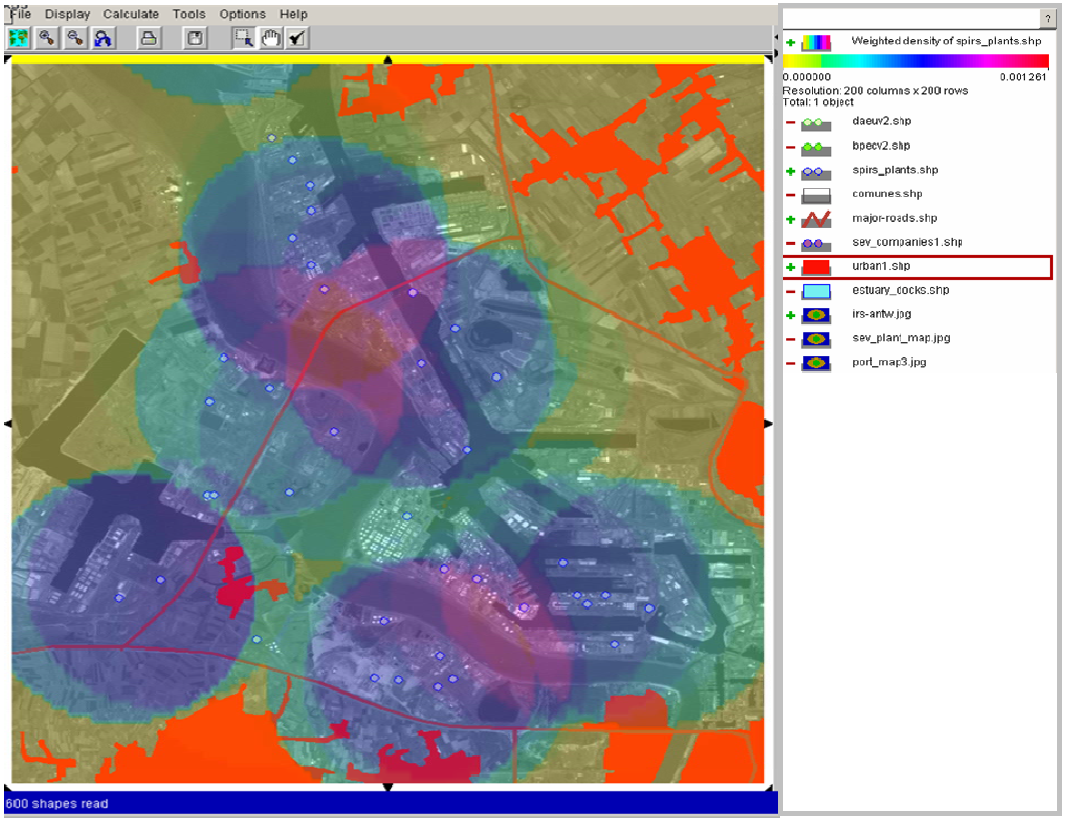Approaches to mapping industrial risks
Mapping of industrial hazards and accident risks may be fairly simple, consisting of points on a map identifying the location of particular hazardous installations and the type and quantity of dangerous substances they use. The mapping of potential accident scenarios is a more sophisticated mapping technique for industrial hazards. These types of maps will indicate the extent and intensity of the physicochemical effects (toxic release, fire or explosion) predicted for a potential accident scenario. For example, such a map may show the concentration level of a toxic cloud at a predefined distance, the thermal radiation of a fire or the overpressure generated by an explosion. Moreover, this type of mapping requires very specific local data. In addition, it may require specific expertise and resources, such as modelling software, that increase the expense and effort of producing such maps. For these reasons, national maps of this nature are generally not available nor are they considered very relevant for risk management. Rather, maps are prepared for specific geographic areas on the basis of the type of industrial hazard or hazards located there and the expected extent of their consequences.

Figure 10. Risk Associated with Hazardous Installations Based on the SPIRS Hazard Index (Source: R. Peckham, EC-JRC-MAHB, 2005)
For the simplest types of industrial hazard maps, the name and location of establishments with hazardous substances may be considered sufficient. Additional dimensions such as types of activities, and types and quantities of substances present at these facilities might also be added. Although this mapping technique may appear simple, it can actually be a useful basis for the most basic type of industrial risk map, that is, one which relates the descriptive properties with accident probabilities.

